Part III. Italy
Chapter 44.Dinner at Master Simone's [February 27, 1348]
Cultural Explanations
 |
Part III. Italy Chapter 44.Dinner at Master Simone's [February 27, 1348] Cultural Explanations |
|
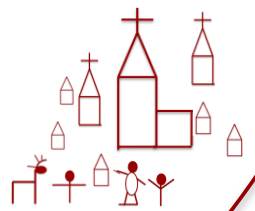 |
In this chapter Bávlos meets the great Boccaccio and hears about the coming of the Plague to Pisa. |
| Nieiddash, Bávlos, Buonamico, Calendrino, in Florence |
In this chapter, Bávlos and Buonamico have settled down to life in Firenze, the grand city of Florence. Buonamico leads his assistant on a walk through the city's main market area, the Mercato vecchio, where many of the tradesmen of the city have their shops.
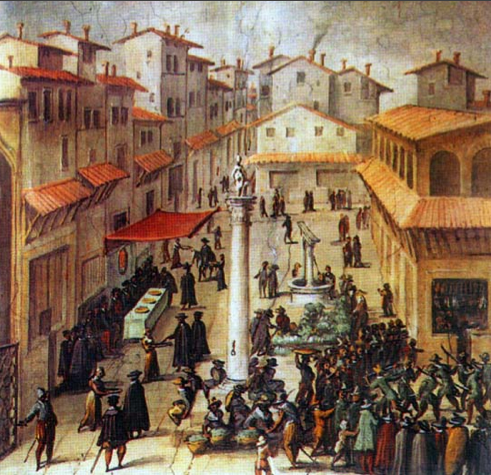 |
| The Mercato vecchio as depicted in the eighteenth century by the Flemish visitor Giovanni Stradano (Jan van der Straet) |
They stop by the church of Santa Maria in Campidoglio, an ancient church that housed a painting of the Madonna by the great painter Giotto (1267-1337).
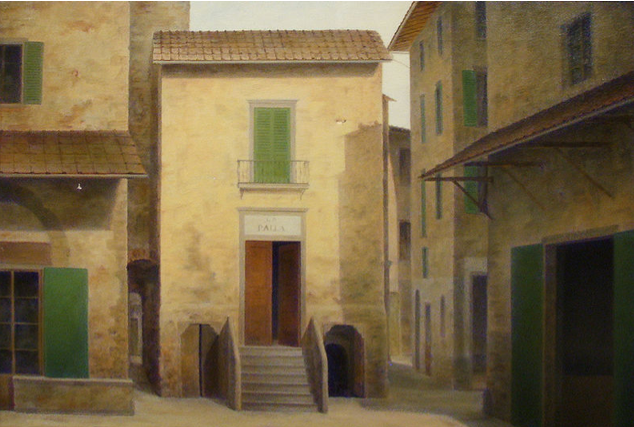 |
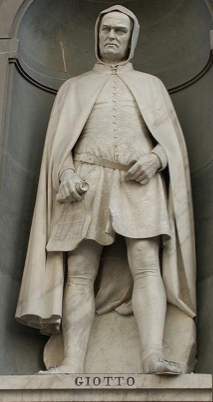 |
| Painting of the church of Santa Maria in Campidoglio as it existed in the nineteenth century. By this time, it had been converted into a secular dwelling. Painting by Fabio Barbottani | Giotto statue, Uffizi Gallery, Florence |
Although Buonamico declares that the ancient church shall stand forever, it was in fact destroyed in nineteenth century, along with the entirety of the market to create the modern Piazza della Repubblica.
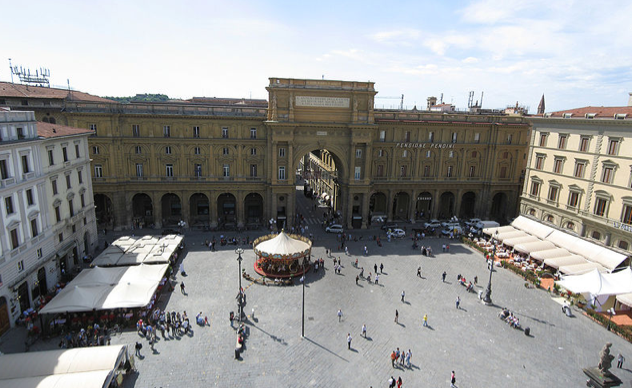 |
| The Piazza della Repubblica as it looks today. |
At the home of the medicus Master Simone, Bávlos meets the great poet Giovanni Boccaccio (1313-75), the eventual author of the Decameron. In the chapter, Bávlos describes the Sámi custom of fleeing disease, leading Boccaccio to imagine retreating to Mount Morello should the Plague ever reach Florence. Of course, this is the premise of Boccaccio's Decameron: a group of noble women and men flee Florence and entertain each other with stories. The stories Boccaccion hears at the dinner are ones that figure in the Decameron, and his dinnermates—Master Simone, Buonamico, Calendrino, and a further friend of Buonamico's named Bruno—all appear in the tales included in the work. The story of Buonamico tricking Calendrino into believing a particular stone confers invisibility appears on Day VIII, tale 3; the tale of convincing Calendrino that he is pregnant appears on Day IX, tale 3. Boccaccio's description of the symptoms of the Plague appears in the prelude of the work. Thus, the chapter presents this dinner—and Boccaccio's meeting with "Bruno" (Bávlos)—as formative in the genesis of one of the masterpieces of medieval literature. Such, of course, is pure fiction, although the custom of fleeing disease was certainly important in Sámi medical practice and differed markedly from Italian custom, as the discussion between Bávlos and Buonamico shows.
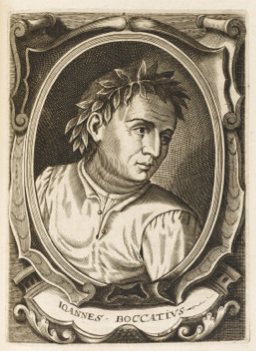 |
| Boccaccio |
Illegitimate son of a Florentine noble, Giovanni Boccaccio was a celebrity of his day. He was particularly admired by women, who found his amorous poetry scintillating. It is noteworthy that female characters play a leading role in the Decameron. In 1348, he was 35 years old.